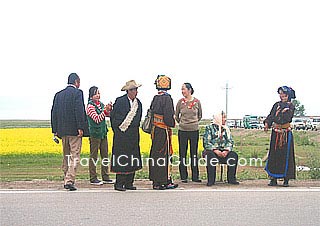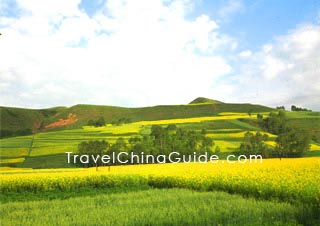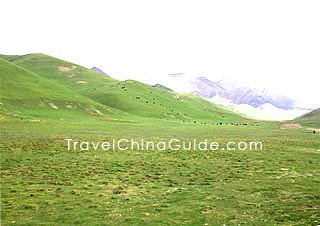Haidong Travel Guide
Haidong Facts
Chinese Name: 海东 (hǎi dōng)
Population: 1,780,000
Area: 13,200 square kilometers (5,097 square miles)
Location: in the northeast of Qinghai Province, northwest China
Administrative Division: 2 counties (Ping'an, Ledu); 4 autonomous counties (Minhe Hui and Tu Autonomous County, Huzhu Tu Autonomous County, Hualong Hui Autonomous County, Xunhua Salar Autonomous County)
Area Code: 0972
Zip Code: 810699
GDP (2018): CNY 45.15 billion (USD 6.82 billion)
Nationalities: Han, Hui, Tibetan,Tu, Salar, Mongolian
Featuring Brilliant Folk Culture and Beautiful Natural Scenery
Haidong Prefecture is situated in northeastern Qinghai Province, neighboring Gansu to the east. The capital city of the province, Xining, is bordered by Haidong to the west. Haidong, located to the east of Qinghai Lake, has a long and brilliant history. Human beings lived here as early as the Neolithic period and many cultural sites were excavated. Also, visitors can have a glimpse into a variety of folk cultures from the traditional Anzhao Dance and embroidery of the Tu nationality in Huzhu County to the Salar wedding in Xunhua County and the traditional song festival of Tu nationality in Minhe County. In the traditional song festival, tens of thousands of singers dress in traditional clothes and gather in Qilisi Canyon on the 6th day of the sixth lunar month. They sing all night without any musical instruments. At the same time, Haidong boasts lush and green forests and many historical scenic spots such as monasteries and Panchen Lama’s former residence.
Haidong Attractions - Things to Do
Gautama Temple (Qutan Temple)
|
|
How to Get to Haidong
Xining Caojiabao Airport is about 7.5 kilometers (4.7 miles) from Ping'an County of Haidong. Buses to its administrative counties are available from the Xining Long-Distance Bus Station in 1, Jianguo Lu in front of the Xining Railway Station. Along the expressway, Ping'an County can be reached from Xining in about twenty minutes.
Weather
Enjoying a semi-dry continental climate, this place features arid and cold weather at high altitudes, lot of sunshine and great temperature differences during the day. Haidong weather has an annual average temperature of 3.2-8.6℃ (37.8-47.5℉). Its northern mountainous area is colder and valleys along the Yellow River and the Huangshui River are warmer. The majority of rainfall occurs from July to September. May to September is the golden season to visit Haidong, especially in cool July and August when most places in China are extremely hot. Several local festivals and ceremonies are usually held during this period.
Haidong Travel Tips
 |
| Tibetans in Haidong |

